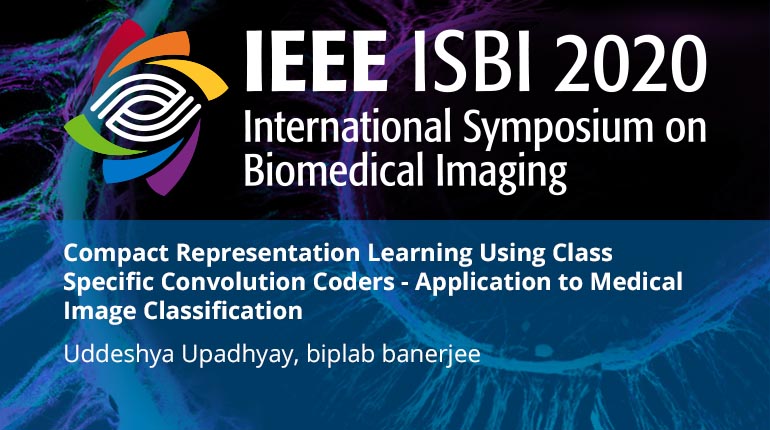
Already purchased this program?
Login to View
This video program is a part of the Premium package:
Compact Representation Learning Using Class Specific Convolution Coders - Application to Medical Image Classification
- IEEE MemberUS $11.00
- Society MemberUS $0.00
- IEEE Student MemberUS $11.00
- Non-IEEE MemberUS $15.00
Compact Representation Learning Using Class Specific Convolution Coders - Application to Medical Image Classification
Medical image classification using deep learning techniques rely on highly curated datasets, which are difficult and expensive to obtain in real world due significant expertise required to annotate the dataset. We propose a novel framework called Class Specific Convolutional Coders (CSCC) to tackle the problem of learning highly discriminative, compact and non-redundant feature space from a relatively small amount of labelled images. We design separate attention-driven convolution network based feature extractors for the categories. These feature learning modules are further intuitively combined so as to make the whole image recognition system end-to-end trainable. Results on different medical image classification tasks show the advantages of our contributions, where our proposed methods outperforms the benchmark supervised deep convolutional networks (CNNs) trained from scratch.
Medical image classification using deep learning techniques rely on highly curated datasets, which are difficult and expensive to obtain in real world due significant expertise required to annotate the dataset. We propose a novel framework called Class Specific Convolutional Coders (CSCC) to tackle the problem of learning highly discriminative, compact and non-redundant feature space from a relatively small amount of labelled images. We design separate attention-driven convolution network based feature extractors for the categories. These feature learning modules are further intuitively combined so as to make the whole image recognition system end-to-end trainable. Results on different medical image classification tasks show the advantages of our contributions, where our proposed methods outperforms the benchmark supervised deep convolutional networks (CNNs) trained from scratch.
 Cart
Cart Create Account
Create Account Sign In
Sign In





